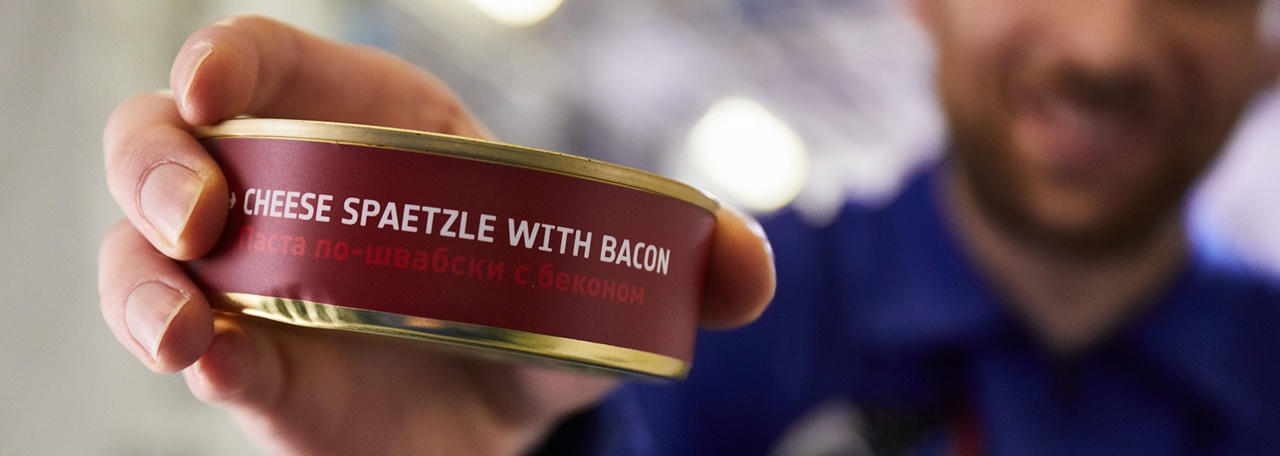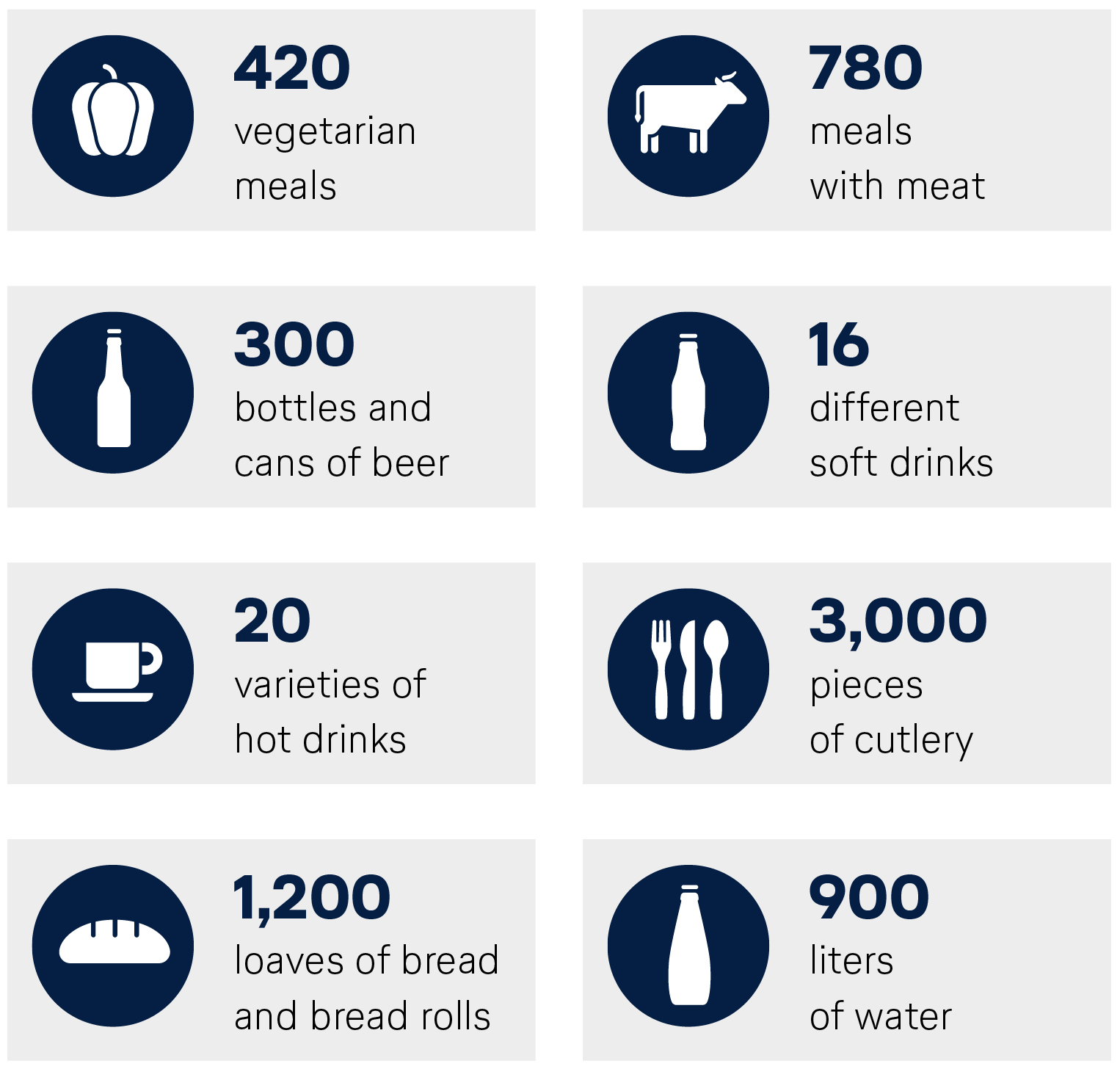Giving good taste a helping hand
Air pressure, but also humidity and vibrations, which all increase during the flight, have a considerable impact on one’s taste buds. For example, fruit and table sugar taste – so it seems – 15 to 20 percent less sweet when cruising at a height of about 10,000 meters. For salt, the reduction in the perceived taste is even up to 30 percent.
On the other hand, sour tastes are perceived more strongly – which is why dashes of lemon juice in desserts and sauces are forgone. However, just adding more salt or sugar to the food does not help to overcome the problem of the food tasting bland. Rather, using more herbs and other spices is the solution here – whether at a height of 10 kilometers or 400 kilometers above planet Earth.
Cheese noodles in outer space
Since the beginning of June, Alexander Gerst has been working with five colleagues on the ISS space station. He has taken six different meals on board with him, meals which he requested from the LSG and tried out in advance. These meals supplement the usual astronaut food and are designed to be eaten on special occasions. The aviation caterers have been working on these meals for a year. They include cheese noodles, pelmeni and bread and butter pudding with roasted plums, all in line with the ideas of Alexander Gerst and the specifications of the European Space Agency ESA.
The astronauts have to be able to eat the food easily despite the absence of gravity. Individual pieces of food should not fall apart so easily and waft through the space station. And in line with the ESA requirements, the food has to be durable for at least two years and still contain all the vital nutrients. Conventional food preservation methods reach their limits here and LSG has made use of novel methods – a knowledge advantage that may someday also benefit civil aviation.

